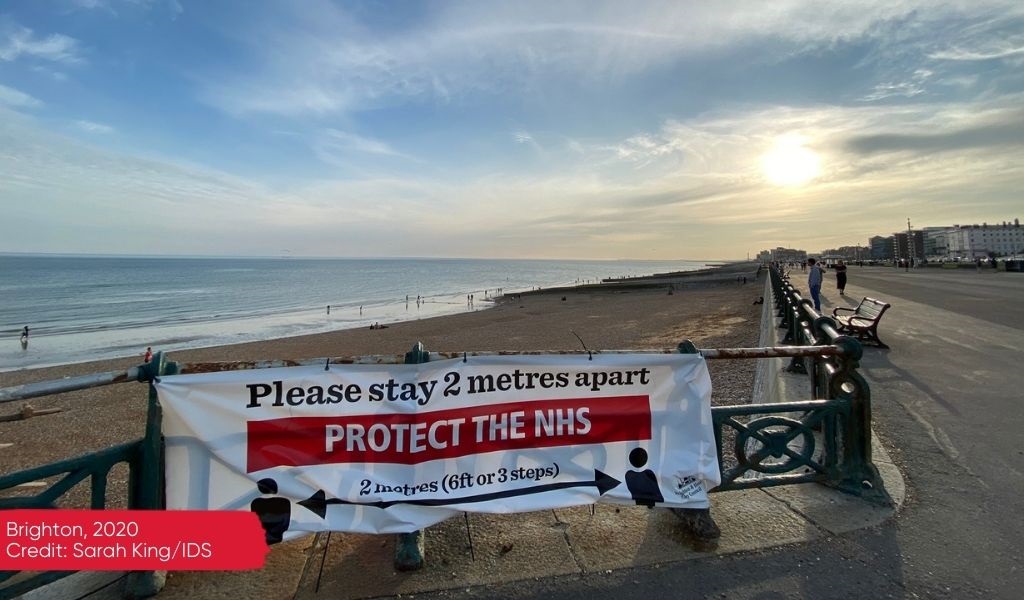As the Covid-19 pandemic enters a protracted phase, governments and pandemic response teams face difficult decisions about mitigating its spread while also protecting economic security. While any response must be proportionate and tailored to a local context, there is a menu of options from which policy makers can draw. One option is to implement shielding, an approach that isolates, or “shields” the most vulnerable without a generalised lockdown. Early evidence shows that it can be effective if it is appropriately designed with community input, socioeconomic support, and trust.
What is shielding?
Recent guidance from the Health in Humanitarian Crises Centre at LSHTM describes shielding as a strategy to protect individuals at high risk of severe Covid-19 illness by helping them to live safely and separately from the general population. It limits contact between individuals at high risk of severe disease and members of the general population who may be at lower risk. Shielding may take place at almost any level within a community: household, street or block, community, or neighbourhood level.
An early study by LSHTM modeled the impact of various intervention strategies in Northern Africa and found that moderate physical distancing combined with shielding might preserve economies while mitigating the impact of Covid-19. A recent SSHAP brief on shielding reviewed emerging evidence from acceptability studies in Sudan, the Democratic Republic of Congo (DRC), and Northwest Syria.
Shielding must be community-led and co-designed
Approaches to shielding should be driven by and co-designed with communities rather than imposed from above, and should recognise local dynamics and practical realities. Early evidence from humanitarian contexts in Syria and Yemen demonstrates the importance of community involvement, especially when working with populations that have already experienced untold harm. If not co-designed, target populations may negatively perceive shielding efforts as coercive or oppressive.
Shielding was implemented with limited scope in Yemen, where humanitarian actors led shielding design and implementation together with target communities. Sheikhs, community leaders, NGOs, and trusted humanitarian actors worked together to design and implement shielding, which increased community acceptance.
Why socio-economic support is vital for the shielded
Social and economic support is vital for those who will be shielded, given that they will have varying levels of existing support and will be asked to stay at home, limiting their ability to work. Socio-economic support will also vary based on state and non-state capacity to provide for shielded individuals and their households. Shielding is simply not feasible if those asked to shield do not have the support and means to do so.
In India, “reverse quarantine” (shielding) has been implemented in Kerala, where existing organisations launched a successful outreach program to reach shielded individuals with social support, essential medicines, and other provisions. Police officers were also provided with additional training to handle service requests and provide basic counselling services. Medical and other practical support is essential for shielding to be successful, but may not be realistic in many settings. However, these tensions must be balanced with a potential blanket lockdown, which would also have significant negative impacts on livelihood.
Lessons from the Global North on psychosocial impact
Shielding has largely been implemented in the Global North, in countries like the United Kingdom and the Netherlands. This has shown that the potential psychosocial impact of shielding should be considered from the early stages of implementation in order to identify locally the barriers to access, the risks, and specific needs of shielding individuals and their families. HelpAge International, an organisation that advocates for older adults globally, raised concerns over singling out older adults for shielding, as well as reduced access to health care for the shielded, the likely psychosocial impact on older adults of long-term isolation and the potential for abuse within the home by caregivers.
The emerging evidence echoes concerns over the long-term impact of shielding on mental health and the idea that shielded individuals may not be able to lead socially and economically engaged lives for an undefinable length of time. One study in the Netherlands showed that the well-being of shielded older adults was severely affected with high levels of reported loneliness and depression. Another study showed that older adults did not find death concerning, but were more worried by the lack of social engagement at the end of their lives due to isolation measures. While Covid-19 cases were mitigated by shielding measures, a better balance between physical safety and psychosocial well-being is necessary.
Communication and building trust
For vulnerable people to be willing to shield, high-risk individuals and the communities they live in must trust in the public health response and the measures that are expected of them. Trust in the health system and relevant authorities drives uptake of public health measures, which underscores the need to better understand the wider political and economic context of trust.
Early studies on shielding attitudes and perceptions in DRC have shown that more information is needed on shielding, identifying risk, and practically implementing it given space and other constraints. Appropriate risk communication and shielding messages should be disseminated via trusted networks from the very start of the planning phase. Moreover, understanding the context of trust in a particular location will allow public health policy makers to design strategies to improve public trust in the response, including any shielding policy.
The threat of Covid-19 is not going away anytime soon. Governments and public health policy makers must implement strategies that reflect long-term thinking. By conducting additional acceptability studies on shielding and considering it as one potential policy mechanism, it is possible to build a more tailored, localised, and proportionate response.




